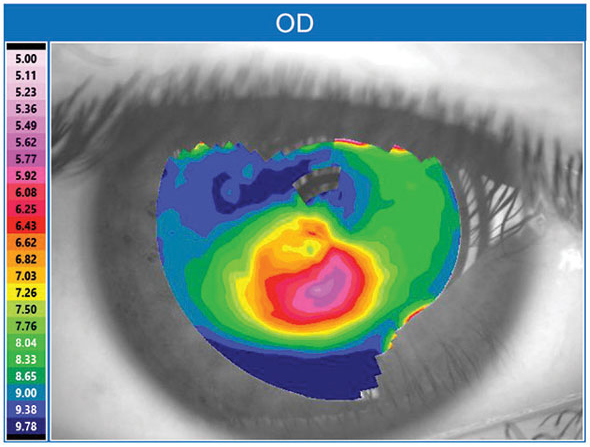 |
| Diagnosis is often delayed in Black female keratoconus patients in particular. Click image to enlarge. |
Keratoconus presents a large health burden in the United States, with the majority of patients diagnosed and treated during their prime working years. Researchers recently conducted a large-scale cohort study to investigate the prevalence of keratoconus in two limited-resource health insurance programs, Medicaid and Children’s Health Insurance Program (CHIP). In their American Journal of Ophthalmology study, they found high per-person direct costs and higher prevalence rates among Black patients.
The retrospective study included a cohort of more than 69.5 million Medicaid and CHIP patients diagnosed with keratoconus between 2016 and 2019. The researchers reported that the computed national prevalence of keratoconus increased from 0.03% in 2016 to 0.04% in 2019, with the highest prevalence observed in patients aged 18 to 39, followed by those aged 40 to 64. In these age groups in the Black population, comparable rates were observed.
Prevalence was moderately higher in females vs. males, but the researchers noted a significantly higher prevalence in Black females vs. males. The Black population also had a significantly higher prevalence of keratoconus, followed by the Hispanic population.
The researchers added that in 2019, the average inflation-adjusted lifetime cost of keratoconus treatment was $28,766.69. The cumulative economic burden was $3.8 billion.
“In the study cohort, the prevalence rates in 40 to 64 years were comparable to those between 18 and 39,” the researchers pointed out in their American Journal of Ophthalmology study. “These data potentially indicate a potential delay in keratoconus diagnosis in a significant portion of the population despite the wide adoption of newer imaging techniques assessing corneal topography.”
The researchers added that their racial analysis findings may also point to “delayed diagnosis and management of the disorder in [the] Black population due to lack of access to vision care,” though larger cohort studies are needed to assess risk factors for the disease and incidence in different racial groups.
Singh RB, Singh Parmar UP, Jhanji V. Prevalence and economic burden of keratoconus in the United States. Am J Ophthalmol 2023. [Epub ahead of print]. |

